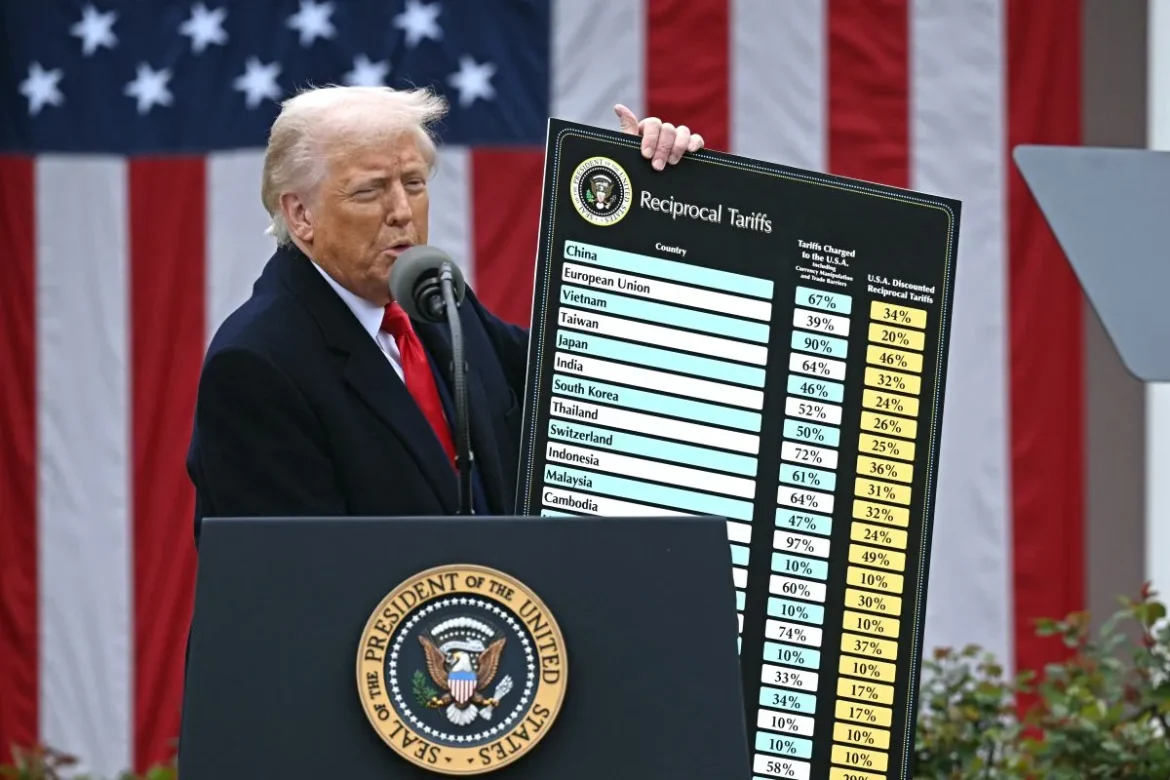Former U.S. President Donald Trump has once again stirred global trade waters by introducing heavy new tariffs that affect countries across Africa, as part of what he calls his “Liberation Day” plan to reshape America’s trade relationships. The policy includes a flat 10% tariff on all goods imported into the United States, but African countries are being hit much harder with specific tariffs that go as high as 50%.
The Southern African country of Lesotho will be the worst hit, with its exports to the U.S. now facing a 50% tariff. Other countries in the region affected include Madagascar (47%), Mauritius (40%), Botswana (37%), Angola (32%), South Africa (30%), Namibia (21%), Zimbabwe (18%), Zambia (17%) and Malawi (17%). North African countries were not left out, as Libya is facing a 31% tariff, Algeria 30%, and Tunisia 28%. In West Africa, Côte d’Ivoire will be hit with a 21% tariff, while Nigeria will now face a 14% tariff on its goods entering the U.S.
These tariffs appear to sideline or possibly cancel the benefits African countries have enjoyed under the African Growth and Opportunity Act (AGOA), which gave many African nations duty-free access to the U.S. market. AGOA is set to expire this September, but Trump’s new tariffs seem to ignore its existing provisions.
In justifying the move, Trump claimed that these African countries have long imposed higher tariffs on American goods. He gave examples like Lesotho charging the U.S. up to 99% on some goods, while Madagascar levies 93% and Mauritius 80%. According to Trump, the new “reciprocal” tariffs still offer discounts compared to what the U.S. is being charged. But critics say this sudden action could damage trade relationships that took years to build.
China, Africa’s biggest trading partner, has also been targeted. Trump announced a 34% tariff on Chinese goods, which comes on top of a previous 20% tariff. This shows that the policy is not just aimed at Africa, but is part of a broader strategy to reset global trade rules in America’s favour.
One major African economy expected to feel the pinch is South Africa. The country exported more than $2 billion worth of vehicles and vehicle parts to the U.S. last year, much of it under AGOA. A new 25% tariff on all foreign-made cars is expected to take effect from April 3, and South African officials are already calling for consultations with the Trump administration. The auto industry alone accounted for about 64% of South Africa’s exports to the U.S. in 2024.
Trump’s executive order explains the new tariff policy as a way of protecting American jobs, boosting local manufacturing, and reducing America’s long-standing trade deficit. According to the order, years of trade imbalances have weakened America’s industrial base and made its defence and manufacturing sectors overly dependent on foreign nations. He argues that foreign countries use unfair economic policies, non-tariff barriers, and tariffs to keep U.S. goods out, which has created an “extraordinary threat” to American economic and national security.
The former president’s new trade approach has received mixed reactions. While some in the U.S. see it as necessary to bring back jobs and support local industries, others believe it could start new trade wars and damage relations, especially with smaller economies that depend heavily on access to the U.S. market.
For many African countries, the tariffs come at a difficult time. Several nations are still struggling with economic recovery post-COVID, high inflation, forex shortages, and food insecurity. Export earnings are crucial to stabilising their economies. With AGOA already in uncertainty and now these tariffs, the future of Africa-U.S. trade hangs in the balance.
